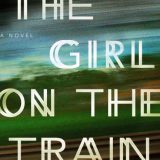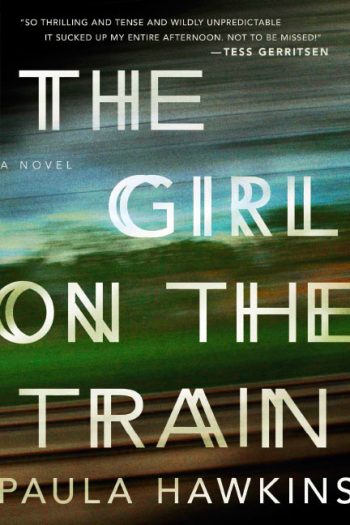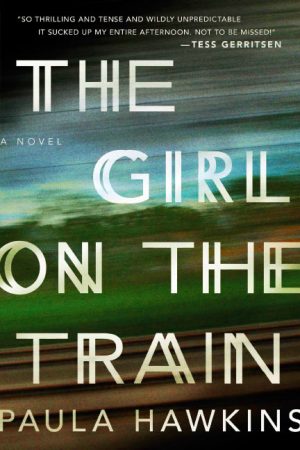The Girl on the Train – Paula Hawkins – 2015
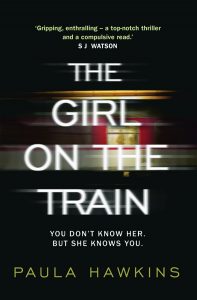
Emily Blunt in the movie

Posted by ReadLit Team – Team@ReadLit.com
We could not help but share Anthony Lane’s witty review of The Girl on the Train (both the movie and the book) in The New Yorker of Oct. 17, 2016 (#HowCanWeNotLoveTheNewYorker #AnthonyLane):
![]()
The Current Cinema – Seeing Things – Anthony Lane – The New Yorker – Oct. 17, 2016
Here is an introduction to “The Girl on the Train.” Listen carefully, and answer the questions that follow. Rachel (Emily Blunt) used to be married to Tom (Justin Theroux), but Tom had an affair with Anna (Rebecca Ferguson), who is now his wife. He and Anna have a baby, whose nanny is named Megan (Haley Bennett). Megan looks a bit like Anna. She–Megan, not Anna–lives with Scott (Luke Evans), who is creepy and possessive, although Tom also looks a bit clenched. Not as clenched as Kamal (Edgar Ramírez), however, who is Megan’s superhot shrink. Rachel will later on enroll as a patient of Kamal’s. Stay with me here. It so happens that Rachel, who is obsessed with her ex, takes twice-daily train ride that passes the house where Tom and Anna live. One day, she–Rachel, not Anna–sees, or thinks she sees, a woman with blond hair, who could be Megan, although she might be mistaken for Anna, kissing a man with dark hair, who could be Scott, Tom, Kamal, or possibly the FedEx delivery guy, on a balcony. Faced with this devastating evidence, she, Rachel, becomes a sleuth, teaming up, slightly unwisely, with Scott, who believes, slightly wrongly, that she is a friend of Megan’s. So (1), who beds whom? (2) Who doesn’t? (3) Who gets whacked? (4) Why can’t Rachel mind her own business? (5) Frankly, who gives a damn?
Such are the issues that spring from the film, which is directed by Tate Taylor, written by Erin Cressida Wilson, and adapted from the novel by Paula Hawkins. Half the sentient beings on earth appear to have read the book, alleging with near-unanimity that they couldn’t put it down. I couldn’t pick it up. I tried, frequently, but it always fell from my grasp, tugged down by the dead weight of the prose. Still, plenty of viscous books have been transfigured into sprightly films. Clint Eastwood made something watchable out of “The Bridges of Madison County,” a public feat that ranks with the raising of Lazarus. Perhaps the same could be done with Hawkins’s narrators–three of them, no less, maundering on in the first person, often in the present tense, and each as annoying as the next.
︙
Does it matter that the plot is so full of holes that you could use it to drain spaghetti? (For a more water-tight version, consult Agatha Christie’s “4:50 from Paddington,” in which a passenger–a chum of Miss Marple’s, thank heaven–sitting in one train spots a strangling in another.) Newcomers, innocent of Hawkins’s novel, may not even care that the final twist is visible from many leagues distant. What does rile, though, is the drink. Rachel is a lush, decanting vodka tonics into a plastic beaker for boozing on the move, and Blunt presents a gaunt and sorry spectacle, with flaking lips, unfocussed gaze, and rosy nose. Whereupon she attends a single A.A. meeting and–bingo!–the problem starts to clear. We realize that alcoholism was never a serious theme; it was merely an excuse for false-memory syndrome, and hence a lazy way to mess with the logic of the story. Judging by the restive sighs that crowned the screening I went to, not everyone is fooled.
Last and least, there is the title. Whether there was an overt attempt, first by Hawkins and then by the filmmakers, to cash in on “Gone Girl,” I cannot say, but in both cases an enfeebling example has been set. By any measure, the principal figures in both works are women, and to label them as girls is to tint them with childishness, as if they were easily cowed by circumstances or stormy feelings, and thus more liable to lash out, or to sink into a sulk, rather than submit their troubles to adult consideration. In 1942, Katherine Hepburn starred in “Woman of the Year” as a prize-winning political columnist. Try zipping back in time, telling Hepburn to rename the movie “Girl of the Year,” and see how far you get.
![]()
[Anthony Lane’s essay continues with a review of the film “Under the Shadow.”]
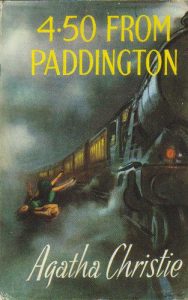
“For a more water-tight version, consult Agatha Christie’s 4:50 from Paddington, in which a passenger–a chum of Miss Marple’s, thank heaven–sitting in one train spots a strangling in another.” – Anthony Lane – The New Yorker – Oct. 17, 2016


